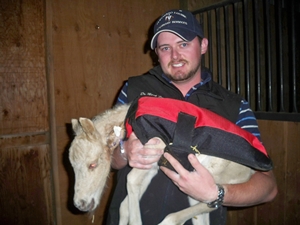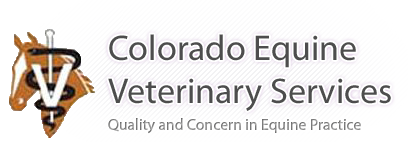Mares have foaled in open fields for generations, but to observe the mare and assist in case of trouble, a foaling stall should be prepared.
 The stall should have smooth walls and doors, and provide enough room for a handler at the mare’s head and an assistant to help with delivery. It needs to be large enough to house mare and foal after delivery, especially to provide shelter from severe weather and confinement in case of injury or illness. While it shouldn’t be drafty, adequate ventilation reduces respiratory problems. Disinfect the stall, allow it to dry, and bed with straw. Sawdust can block the nasal passages of a damp newborn foal.
The stall should have smooth walls and doors, and provide enough room for a handler at the mare’s head and an assistant to help with delivery. It needs to be large enough to house mare and foal after delivery, especially to provide shelter from severe weather and confinement in case of injury or illness. While it shouldn’t be drafty, adequate ventilation reduces respiratory problems. Disinfect the stall, allow it to dry, and bed with straw. Sawdust can block the nasal passages of a damp newborn foal.
Adequate light to assist the mare will make the job much easier. A small night light will facilitate checking the mare without disturbing her. While a heat lamp may be necessary for a weak foal, infrared lamps can become too hot and pose a fire hazard. Keep the lamp and wiring protected from damage by mare or foal, and be certain the foal can move away from the lamp should it become too warm.
A safe paddock should be provided for the mare and newborn foal to exercise alone for a few days, until the foal is strong enough to run with other mares and foals. Some geldings will chase foals to the point of injury, so group your horses accordingly. Safe fencing is important as small hooves are easily trapped in wire and foals can slip out through small gaps in the fence.
